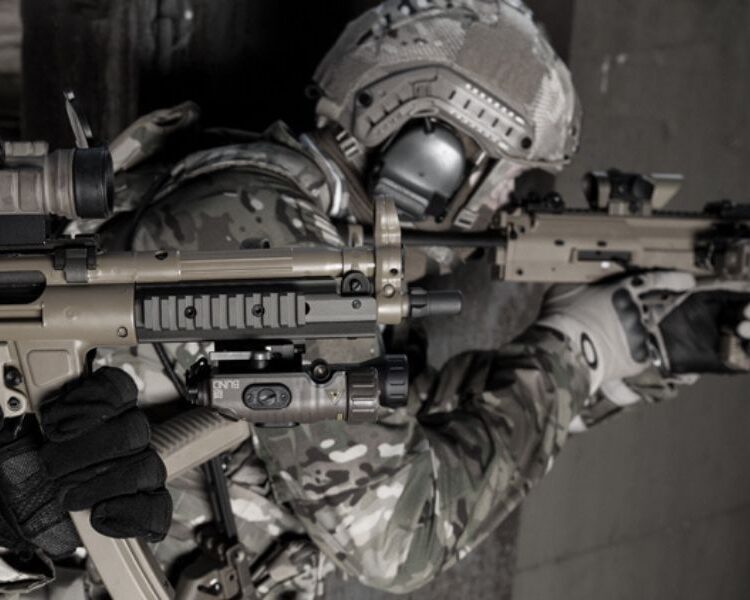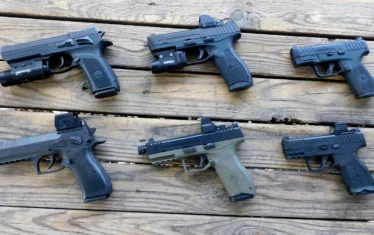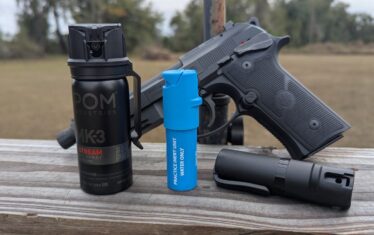Following the end of World War II, the production of arms was altered entirely. In the mix of technological advancements, massive changes in doctrine, and a rapidly shifting world, a new little chunk of the firearms industry was changing in Oderndorf, Germany. That little town ended up birthing what most of us would later know as the global powerhouse: H&K, or Heckler & Koch.
Post WWII Beginnings
Following the war’s end, some parts of Germany still held the potential for significant industrial production, as well as the staff to operate it. The Mauser factory in Odernborf, a former hub of arms production, had fallen into disrepair. The French occupying forces, attempting to neuter the local’s abilities to retaliate further, had ordered the destruction of records and machinery, which had become a part of the people’s identity, war or not.
Regardless, the people there, like people often do, had found ways to preserve themselves in the hardest of times. In 1948, three former Mauser Engineers decided to reinvigorate the prowess for which Oderndorf has built a legacy. Edmund Heckler, Theodor Koch, and Alex Seidel founded the Engineering Office Heckler & Co.
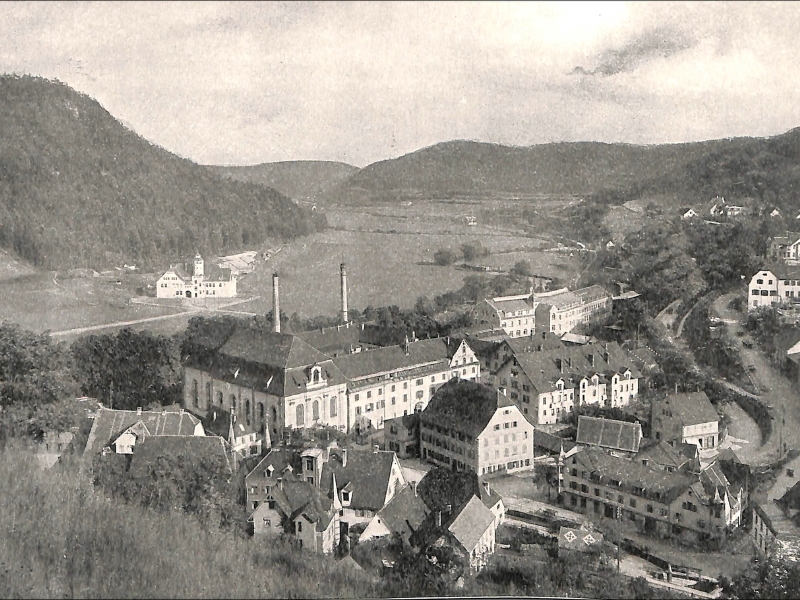
Company Formation & Early Venture
The war had developed all three of the engineer’s abilities with their time at Mauser, but initially, they focused their manufacturing on different types of precision parts. Many were machine tools, bicycles, or sewing machine parts. They had to remain versatile, with their entire country being reconstructed around them.
In 1949, the engineers decided to formalize their company and registered it as Heckler & Koch GmbH. While these early company years didn’t have them building what they were good at, it did help to define their standard and build a reputation in the surrounding areas for their ability to produce quality machinery. Not too long after, they found their way back to their niche — firearms manufacturing.
Heckler & Koch’s Shift into Firearms
Entering into the mid-1950s, H&K had already established itself well as a quality manufacturer of precise machine parts. In 1956, H&K transitioned back to manufacturing from general machining to the construction of firearms. It was an easy switch for the founders to make based on all the time they had with Mauser, developing their abilities.
Leading into the Cold War, Western Germany had developed a need for Germany to start re-establishing a military to ensure security amid the reconstruction. It was an easy fit for H&K to fit into the role, because why not buy locally? Especially when your local is H&K.
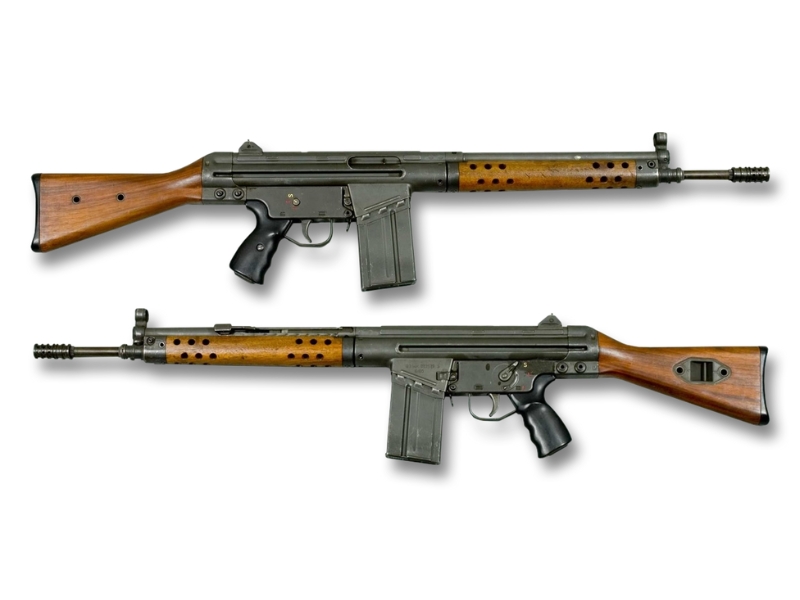
Enter the G3 Battle Rifle
H&K’s official debut into the firearms world was the G3, chambered in 7.62 NATO. The G3 was H&K’s response to West Germany’s need for a modern rifle. The G3 stood out at the time because of its innovative roller-delayed blowback system.
After a series of evaluations and feedback, the G3 was adopted by the Bundeswehr in 1959. This adoption was a significant turning point for H&K, not just as a commercial success but as a spotlight in the global market for their future arsenal. Eventually, the G3 would be exported to over 70 countries and manufactured under license in at least 15 countries, bringing the total number built to around 7,800,000.
The G3 laid the groundwork for future developments. Its design principles would influence the development of future H&K firearms and firearms at large. Specifically, the G3’s development would evolve into introducing the HK21 machine gun in 1961.
Meet The MP5
After the success of the G3, H&K continued developing new firearms to fit niche use cases & markets. One of those that became more successful than they probably could have imagined was the MP5.
The MP5, chambered in 9mm, was created to sate the growing need for compact PDW. This was especially important for law enforcement and an ever-increasing special forces community. Utilizing the same roller-delayed blowback system as the G3, the MP5 offered exceptional accuracy and reliability in a compact package.
Over the years, the MP5 has seen numerous variations and improvements, adapting to the evolving requirements of its users, such as MP5SD and the MP5K. Its widespread use in high-stakes scenarios, from hostage rescues to counter-terrorism operations, has contributed to its legendary status. The Iranian Embassy Seige in 1980 stands out as a defining moment for the MP5 as the British SAS breached the embassy on live TV.
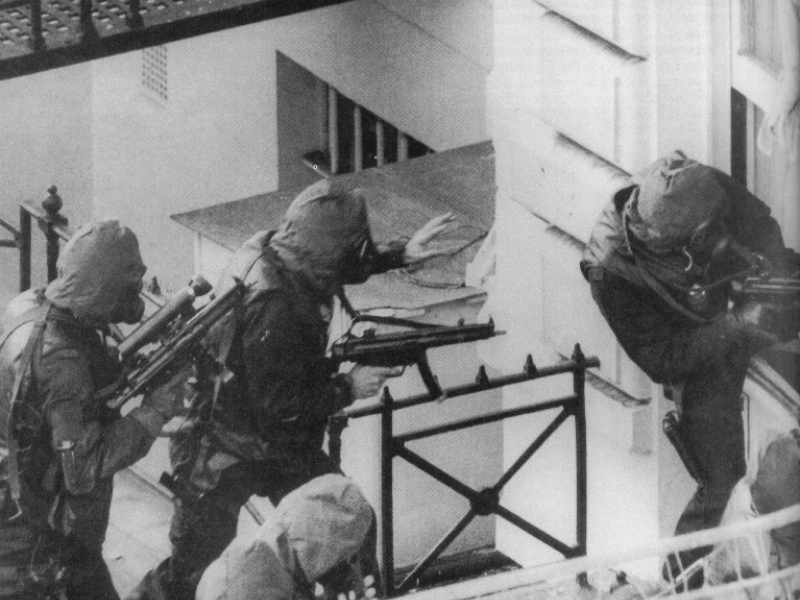
The MP5’s prominence in popular culture, featured in countless films and video games, has further solidified its place as one of the most recognizable firearms in history. If it isn’t the biggest, it has to be one of the most extensive pages of any firearm on imfdb.org, the internet movie firearms database.
Development & Design of Heckler & Koch
Over the next few decades following the release of MP5, H&K continued to expand their product lines and tried to continue pushing the boundaries of what was capable at the time with design.
One of these developments was the G11. The G11 was notable for its caseless ammunition and all-around sci-fi-looking boxy design. It’s appeared in more than a few video games, a couple of anime, and Marco Brambilla’s 1993 Demolition Man, where it was a “phaser“ gun Wesley Snipes used. While it didn’t end up seeing any remarkable usage, it was more of an example of H&K’s willingness to throw everything at the wall and see what sticks. Not every development is a win, but at least they push the envelope.
The USP pistol series was the next significant addition to the H&K’s lineup. The “Universelle Selbstladepistole” or “Universal Self-loading Pistol” was introduced as a replacement for the P7 series of handguns in their ongoing efforts to modernize their lineup. USP was officially unveiled at the SHOT Show in 1993, and production began in the same year. We have holsters compatible with most of the more modern H&K Pistol designs, including the USP.
The 90s and early 2000s were a big expansion point in H&K’s catalog. They added quite a few significant additions, such as the G36, HK416, and MP7. The G36, known for its lightweight design and modular capabilities, was H&K’s step in the AR-15 ring with their gas piston system, and the MP7 & UMP were a continuation of the MP5’s quest for a better PDW.

Corporate Changes and Global Expansion
The fall of the Berlin Wall in 1989 and the subsequent reunification of Germany in 1990 had significant implications for Heckler & Koch. It’s a big splash for economics and politics when you effectively merge what had become two countries at that point. One of the immediate impacts was on defense spending; without as many looming threats just across a wall, spending as much on military contracts didn’t make as much sense.
This was massive for H&K, given its heavy reliance on military contracts. But they began to adapt their business model, shifting the focus more on international markets and diversifying their client base beyond the German military. That shift opened new avenues for growth and evolution.
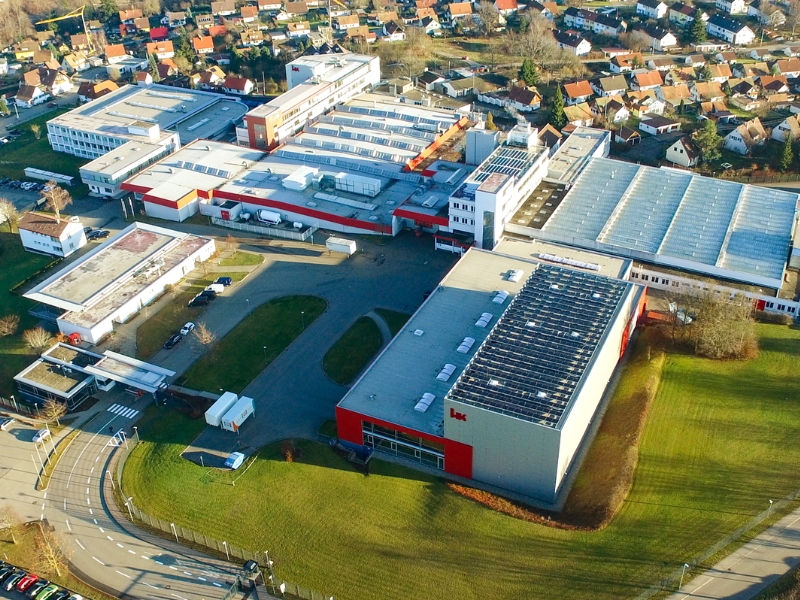
Acquisitions and Mergers to Current Ownership
The 1990s and early 2000s were a period of considerable change in ownership and structure for Heckler & Koch. The company underwent several acquisitions and mergers. In the mid-1990s, H&K was acquired by Royal Ordnance, a division of the British aerospace and defense company British Aerospace (BAe). This acquisition was part of BAe’s strategy to expand its small arms manufacturing capabilities.
In 1999, BAe merged with Marconi Electronic Systems to form BAE Systems, one of the world’s largest defense contractors, bringing H&K under this new corporate umbrella. However, in 2002, Heckler & Koch was sold again to private investors. This sale marked a significant change in the company’s trajectory, moving it from being a part of a large defense conglomerate to a more independently operated entity.
Heckler & Koch’s Impact
From the G3 battle rifle to the MP5 and, more recently, the HK416, H&K’s contributions have shaped modern military and law enforcement arsenals. The company’s ability to navigate the complexities of post-war Europe, shifts in global defense landscapes, and changing market demands underscores a resilience few operations possess.
Heckler & Koch continues to impress, and it’ll be exciting to see their future innovations.





